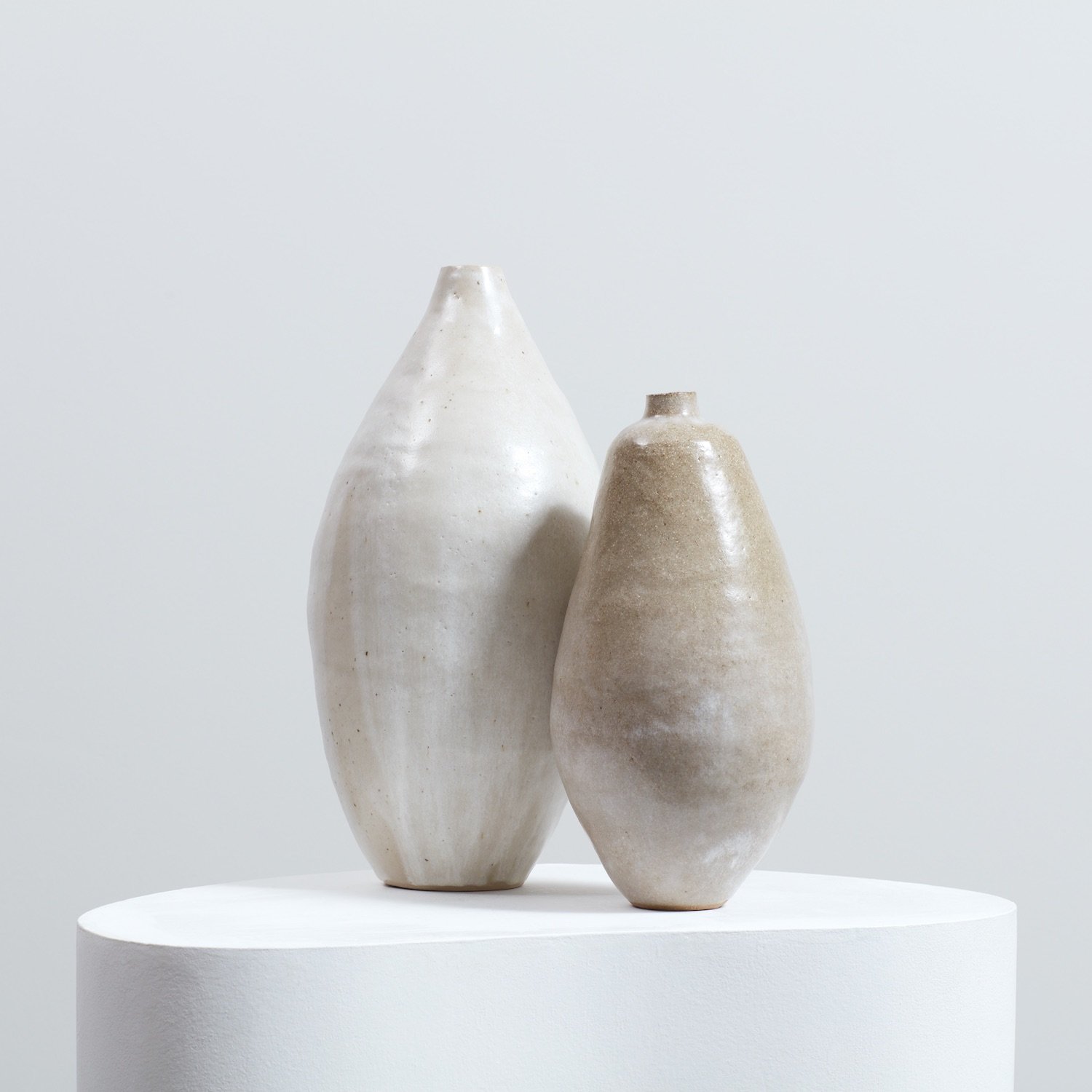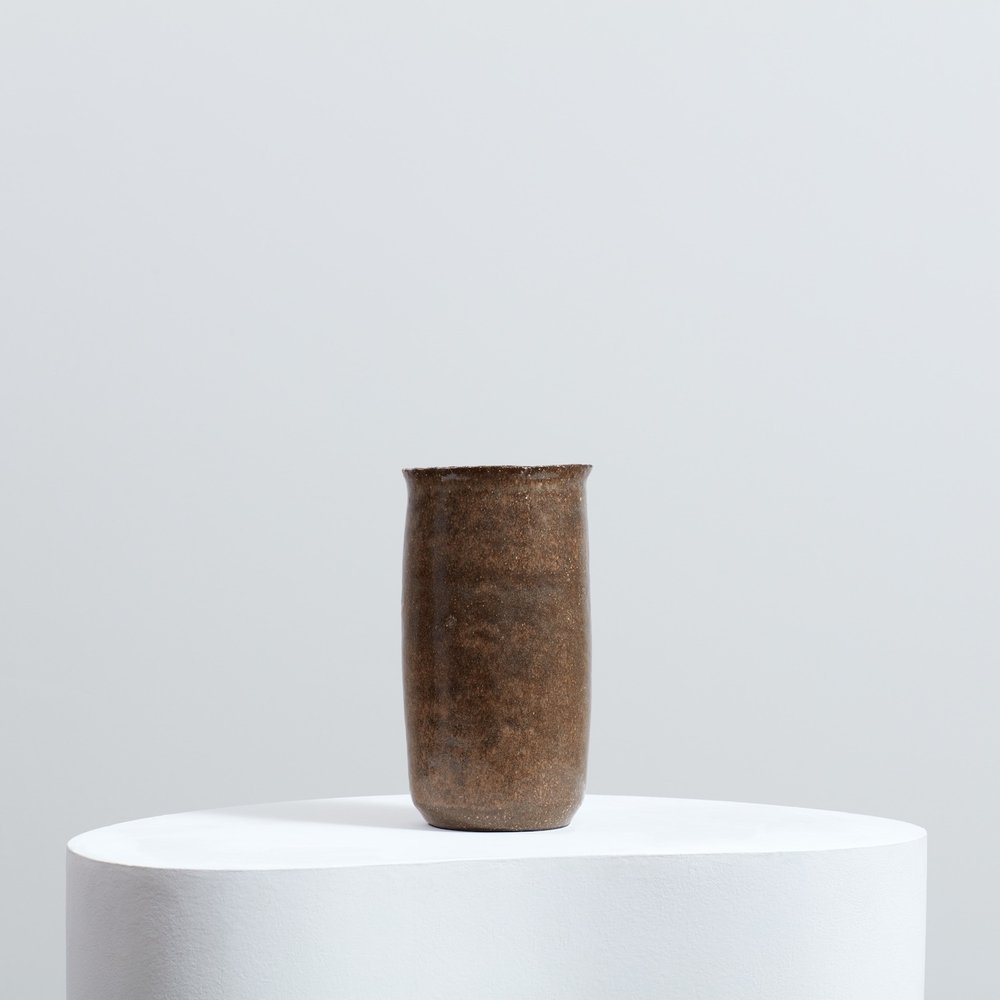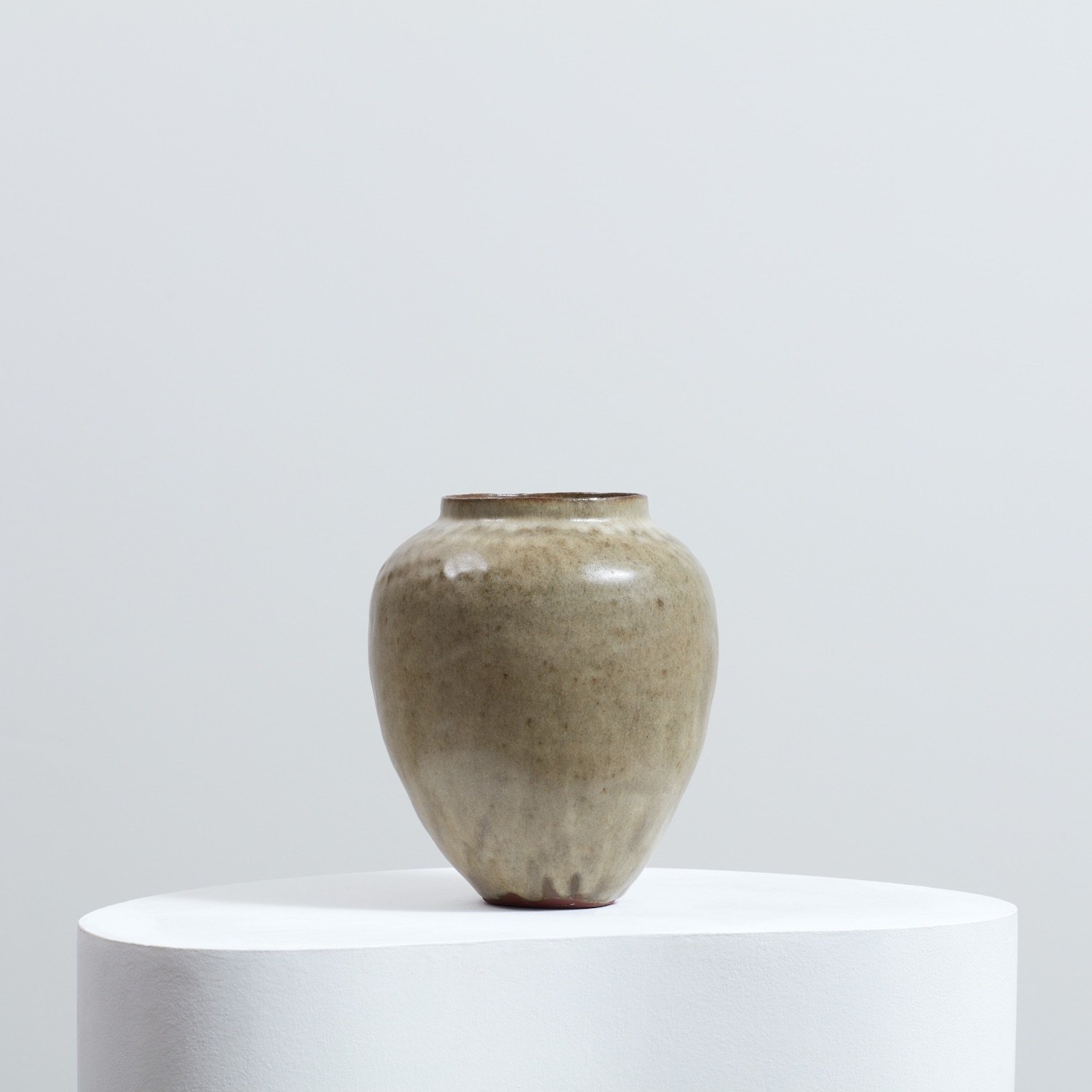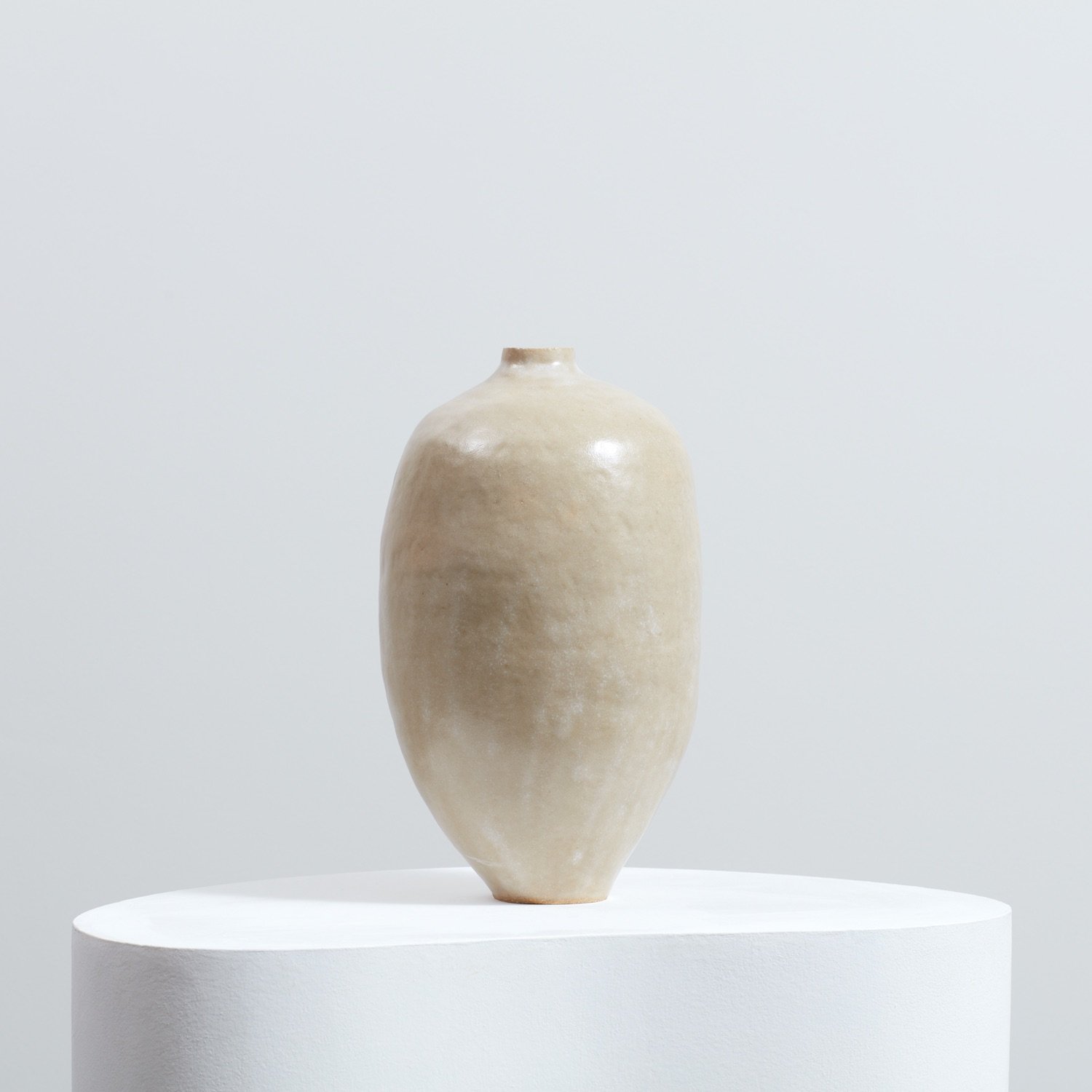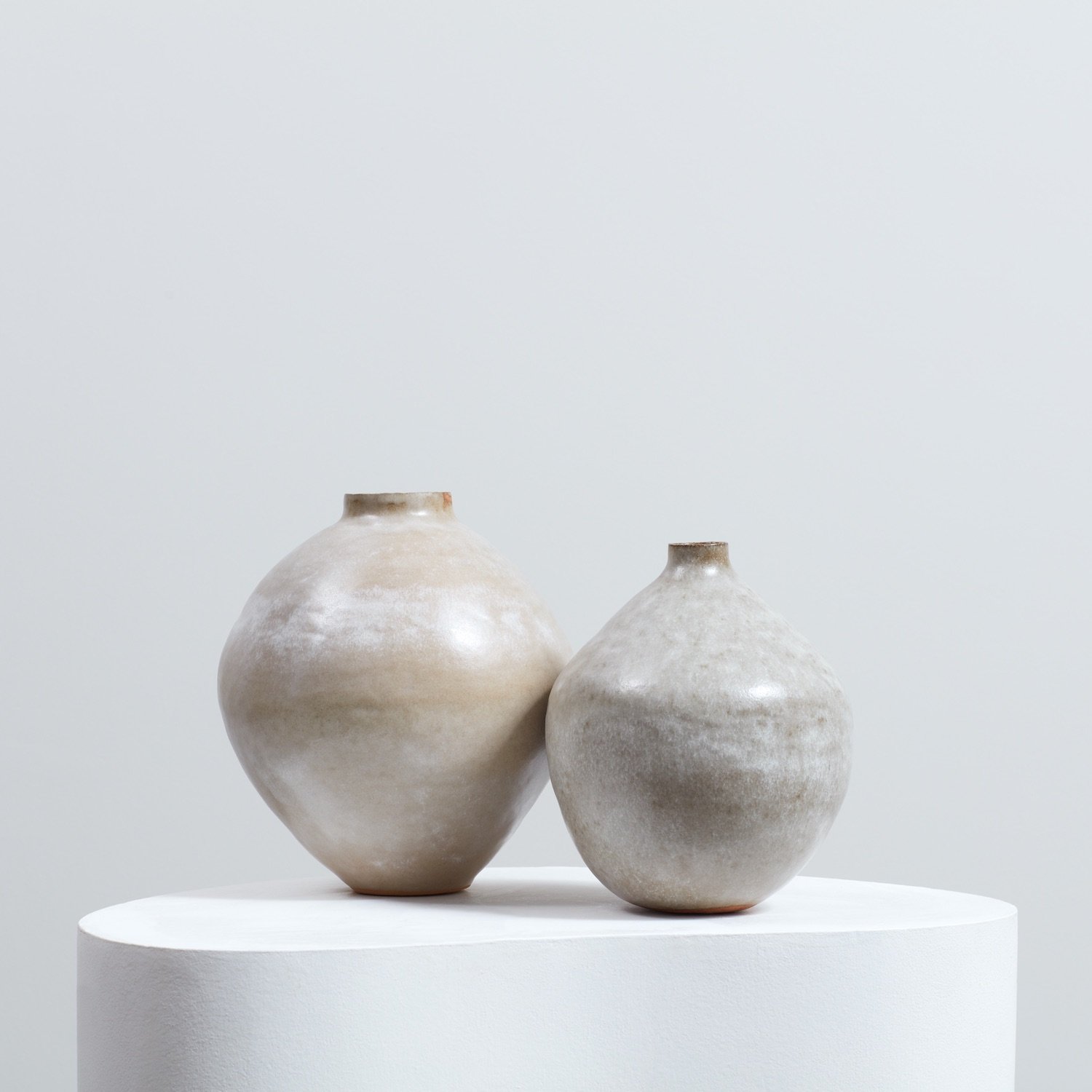TOR HARRISOn
MAKER IN FOCUS - AUGUST 2024
A homage to the art of slow making, cherishing the inherent imperfections and quiet resilience found in handcrafted pieces. Tor celebrates the ancient tradition of working with clay, allowing the subtle fingermarks on the surface to serve as a tangible link between her hands and the observers.
Image credit: Maria Bell
How would you describe your process on achieving the shape and texture across your collection of works?
Building with clay is very different from throwing - I work with my hands and a few simple tools to sculpt, smooth and pinch the clay into form, working slowly up with fresh layers, or coils of clay. This physical process is directly translated into the shapes and textures of the finished works. They are imperfect, organic forms. The marks of the maker: repetitive, small indentations are a reminder of the person that made the piece. I think this human element is important in my work, I want the pieces to feel refined but also bodily, resonant with the energy that was involved when creating.
Does your work start from a sketch? Or do you begin your making with nothing in mind and see where the material takes you?
I don’t start out with any fixed idea of what I’m about to make, I like to give space to allow forms to emerge in a more intuitive way of making, tuning in with touch. Working with clay is very primal - there is no right way to hand build, no exact science and that is really freeing.
What would you say are the main characteristics of your work?
I think my work has a strong sense of physicality, with visible traces of touch they invite a haptic experience. They have an earth solidity to them - a kind of gravity, together with something intrinsically lighter and more ethereal in spirit. They are unadorned, simple with a very natural tonal palette.
What have you found to be your biggest challenges being an artist?
The creative process and all the many facets it entails is fulfilling on so many levels. Separating this value from commercial success is something I am challenged by regularly.
What are the stages of your work on a vessel? Do you work on more than one vessel at a time?
There are many steps from raw clay to finished ceramic and none can be rushed. A single piece is made over the course of weeks - after the initial building and shaping, it is left to dry a little to be further reshaped and refined in the following days when the clay is a little harder. Then it’s left until completely bone dry before it has its first firing (bisque). After this, it is coated with glaze and has a second, hotter firing (glaze), before being sanded, washed and dried. It’s process heavy but these many stages of transformation are quite magical to witness. I sometimes work on 2 or 3 pieces at a time.
What’s your relationship with colour and how do you decide on the colour palette of a vessel
I have lived in Cornwall for a lot of my life and have undeniably been influenced by the colour palette of the landscape. The nuances of tone: salt bleached dune grass, lichen covered granite, moorland soil, broken satin shells and wet sand. I use clays and glaze recipes that feel in harmony with this palette.
Have any other artist and makers influenced your practice?
There are some incredibly influential women I open the books of when I want inspiration, not confined to the world of ceramics: Valentine Schlegel, Charlotte Perriand, Lucy Rie, Ruth Asawa, Barbara Hepworth to name a few.
Image credit: Amelia Pemberton
You've been living and making in both Cornwall and Berlin. How did the move to Germany influence your work?
I’ve been living in Berlin for about 18 months and perhaps now with some hindsight I can see some impacts on my work. I was certainly drawn to exploring taller, larger forms, more tower-like that filled the space I was working in. The move also forced me to work with new clays which was frustrating and rewarding in equal parts. I had to focus on feeling into each clay to understand how it performs and moves.
What direction do you see your creative practice moving toward? Can we expect the introduction of some new materials?
I have been a photographer for two decades. Both disciplines contain a mystery to me - the chemical reactions that take place in the firing (clay) and developing (film) stages both add another element to my work that gives space for magic and mistakes. There is a special kind of delayed gratification - nothing can be rushed and this anticipation adds something special. I would love to explore a combination of these disciplines.
Tell us a bit about your studio and your day to day life in Berlin?
I have a small studio in a shaded, leafy courtyard, perfect for working with clay in the hot and dry summer months. The building is shared with 4 other female artists in a really interesting part of the city. I love the independent spirit here, so many creative, small businesses.
I go through intensive periods of making, sometimes everyday for a couple of months working on a collection and then I take a longer break. I need this time to give my hands a rest and my head time to percolate on evolving or new ideas. Sometimes this can feel quite seasonal, Winter and Summer are often times when I find myself eager to get into a rhythm of building.
How would you describe the selection of work we have at M.A.H Gallery?
This latest collection builds on earlier work, larger vessels sit together with smaller forms. Instead of a heavily pinched finish, works have a smoother touch, the marks of my hand are more subtle but felt somewhere deeper in the finished work.
DISCOVER TOR’S FULL COLLECTION HERE
Please contact the Gallery team on: enquiries@mah-gallery.com or call 020 898 100 86 if you are interested in learning more about Tor’s work


